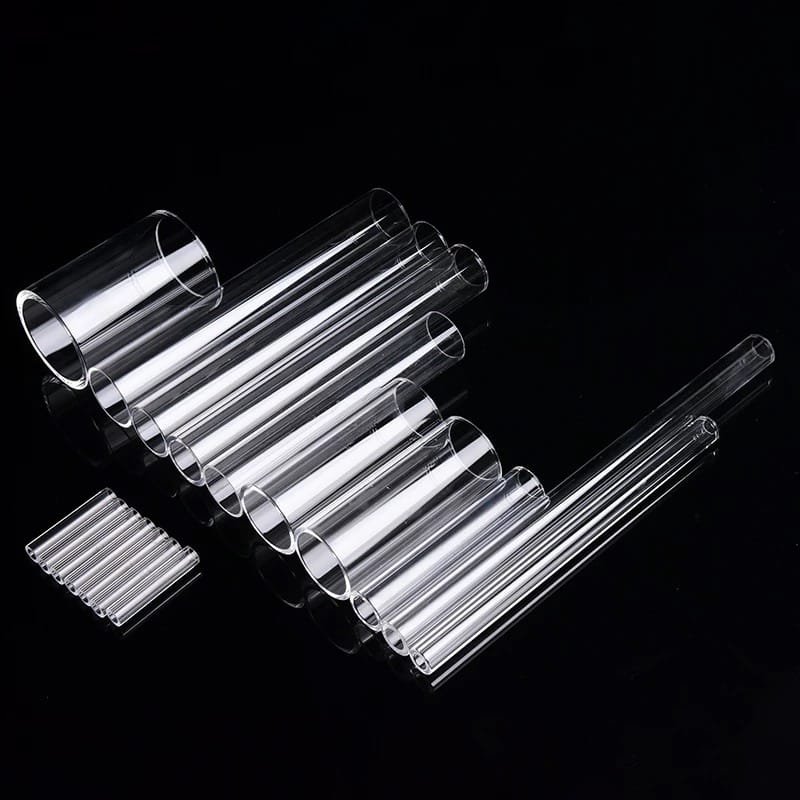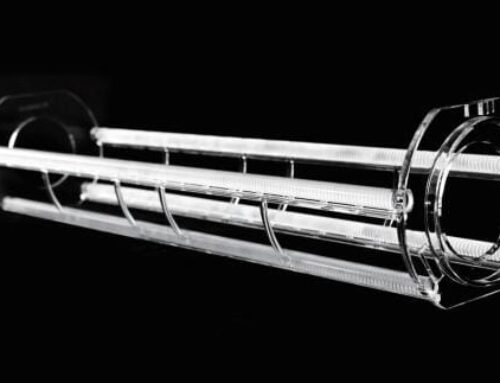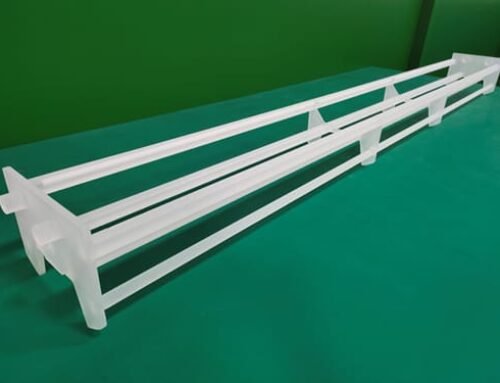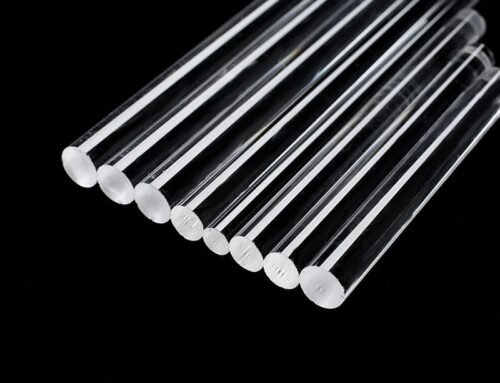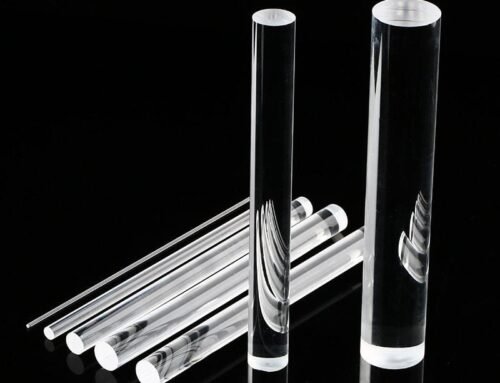Introduction to Quartz Glass
Quartz glass, often referred to as fused silica, is a type of glass comprised predominantly of silicon dioxide (SiO2). Distinguished by its unique molecular structure, quartz glass exhibits remarkable properties, including exceptional optical clarity, high thermal resistance, and outstanding durability. These characteristics position quartz glass as a critical material within solar energy systems, where reliability and efficiency are paramount.
The manufacturing process of quartz glass involves the melting of high-purity silicon dioxide, which is then cooled to form a transparent, non-crystalline solid. This process results in a material that not only boasts a high melting point but also maintains its structural integrity across a broad range of temperatures. The resistance to thermal shock makes quartz glass particularly valuable for solar applications, which often endure fluctuating environmental conditions. Its ability to withstand harsh weather while maintaining performance is crucial in enhancing the longevity of solar energy systems.
Another salient feature of quartz glass is its superior optical transmission capabilities. With a high transparency rate, quartz glass allows for the efficient passage of sunlight, enabling photovoltaic cells to harness solar energy effectively. This optical property is essential for maximizing the energy output in solar panels and concentrating solar power systems. Furthermore, quartz glass’s low coefficient of thermal expansion ensures minimal distortion or damage under varying temperatures, which is imperative for maintaining the efficiency of solar technologies.
In the realm of renewable energy, the utilization of quartz glass serves not just as a protective layer for solar cells but also as a fundamental component that enhances their functionality. Its inherent qualities make it an invaluable resource in advancing solar energy applications, thereby underscoring the significance of quartz glass in the journey toward sustainable energy solutions.
Why Quartz Glass as a Choice for Solar Energy
Quartz glass has emerged as a superior material in the realm of solar energy applications, offering several significant advantages over traditional alternatives. One of the critical attributes of quartz glass is its remarkably high light transmission rates. This property enables solar panels to capture and utilize sunlight more efficiently, thereby enhancing their overall energy output. In the competitive landscape of solar technology, where efficiency translates directly into productivity, high light transmission becomes a non-negotiable factor.
Another compelling benefit of quartz glass is its exceptional resistance to ultraviolet (UV) degradation. Unlike conventional glass that may deteriorate when exposed to prolonged UV light, quartz glass maintains its integrity and clarity over time. This durability is particularly crucial for solar energy systems, as any reduction in transparency can lead to decreased performance and energy generation. Such longevity ensures that solar panels utilizing quartz glass can operate effectively throughout their lifespan, minimizing the need for frequent replacements or repairs.
In addition to its outstanding light transmission and UV resistance, quartz glass exhibits remarkable thermal stability. Solar panels are subjected to wide temperature fluctuations, and materials employed in their construction must withstand these variations without compromising performance. Quartz glass retains its structural integrity even under extreme heat, making it less susceptible to thermal stress. This resilience can significantly prolong the life of solar energy systems, allowing them to remain operational for extended periods, thus justifying the initial investment.
Furthermore, the versatility of quartz glass extends to its compatibility with various solar technologies, ensuring that it can be effectively employed in numerous applications. From photovoltaic cells to concentrated solar power systems, quartz glass continues to play an instrumental role in driving the future of solar energy, making it a choice material for innovators in the field.
Key Properties of Quartz Glass That Benefit Solar Technology
Quartz glass, known for its unique properties, plays a significant role in enhancing the efficiency of solar energy systems. One of the most noteworthy characteristics of quartz glass is its exceptional chemical resistance. This property ensures that the glass can withstand harsh environmental conditions without degrading, which is crucial for the durability of solar panels. Its ability to resist corrosion from acidic and alkaline substances means it maintains optical clarity and structural integrity over time, ultimately extending the lifespan of solar installations.
Another critical property of quartz glass is its low thermal expansion. Unlike other materials, which can expand or contract significantly with temperature changes, quartz glass remains stable, reducing the risk of thermal shock. This stability is essential in solar applications where temperature fluctuation is frequent. By minimizing the likelihood of cracking or breakage when exposed to varying temperatures, quartz glass ensures consistent performance and reliability in energy harvesting.
Additionally, the optical performance of quartz glass is outstanding. With a high transmittance rate across the solar spectrum, it allows maximum sunlight to penetrate and reach the photovoltaic cells beneath. This enhanced optical performance is paramount in optimizing energy conversion, as even minor improvements in sunlight capture can result in substantial increases in power output. The unique ability of quartz glass to minimize reflection and absorb only non-useful wavelengths further aids in improving solar panel efficiency.
Moreover, quartz glass is also known for its excellent thermal conductivity, which facilitates better heat management in solar panels. This property is essential in preventing overheating, thereby maintaining the operational efficiency of solar energy systems. Overall, these key properties make quartz glass a vital component in solar technology, contributing to the effectiveness and longevity of solar energy systems.
How Quartz Glass Enhances Solar Panel Efficiency
Quartz glass plays a pivotal role in enhancing the efficiency of solar panels, primarily through its superior optical properties, which include excellent light transmission and low reflection losses. One of the key mechanisms by which quartz glass improves solar panel performance is its ability to encapsulate light effectively. Unlike conventional glass, quartz glass possesses a higher clarity and lower absorption rates, allowing more sunlight to penetrate the solar cells. This increased light availability directly correlates with enhanced electricity generation, maximizing the energy conversion capabilities of solar panels.
Moreover, quartz glass significantly reduces reflection losses, an often-overlooked factor in solar panel efficiency. Traditional glass materials can reflect a considerable portion of incoming sunlight, diminishing the overall energy harvested. Quartz glass, with its specially designed surface coatings, minimizes this reflective loss. This ensures that a greater volume of light is transmitted to the photovoltaic cells, facilitating higher energy conversion rates. Research indicates that solar panels utilizing quartz glass can achieve performance improvements of up to 10% compared to those made with standard glass.
Additionally, the thermal stability and durability of quartz glass contribute to maintaining efficiency over the long term. Its ability to withstand harsh environmental conditions without degrading ensures that solar panels remain functional for extended periods, further enhancing energy output. For instance, case studies involving solar installations in extreme climates have demonstrated that panels with quartz glass consistently outperform their conventional counterparts. This not only underscores the material’s effectiveness but also supports its integration as a standard in high-efficiency solar energy systems.
In conclusion, the incorporation of quartz glass into solar panel design significantly heightens efficiency through optimized light encapsulation, reduction of reflection losses, and improved durability. By leveraging such advanced materials, the solar energy sector can better meet the growing demand for renewable energy solutions.
Durability and Longevity of Quartz Glass in Solar Applications
Quartz glass has emerged as a prominent material in solar energy systems, primarily due to its remarkable durability and longevity. One of the most notable features of quartz glass is its exceptional resistance to a range of environmental factors. Unlike traditional glass, quartz glass exhibits remarkable stability under fluctuating temperature conditions, which is essential for solar applications that often experience extreme daily and seasonal temperature variations.
Furthermore, quartz glass is not easily affected by acidic compounds. This resistance is particularly significant in regions susceptible to acid rain, where other materials might suffer degradation over time. The chemical durability of quartz glass allows it to maintain its structural integrity and optical performance, ensuring efficient energy conversion throughout its operational life.
Additionally, quartz glass is highly resistant to abrasion and impact, making it suitable for sandy environments commonly found in solar farm locations. The fine particles can be detrimental to typical glass materials, leading to scratches and compromising efficiency. In contrast, quartz glass provides superior protection against these abrasive particles due to its hardness and resilience.
In terms of lifespan, quartz glass surpasses several conventional solar materials such as tempered glass or plastic polymers. The longevity of quartz glass can reach up to 25 years or more, significantly outlasting other alternatives that may require replacement or maintenance every 5 to 10 years. This longevity not only reduces overall costs associated with solar system maintenance but also enhances the environmental benefits by decreasing the frequency of material replacements.
In conclusion, the durability of quartz glass in solar applications is a pivotal factor in ensuring the efficiency and reliability of solar energy systems. Its superior resistance to environmental challenges and its impressive lifespan compared to other materials make quartz glass an ideal choice for modern solar technology.
Cost and Economic Viability of Using Quartz Glass
The integration of quartz glass in solar energy systems presents a compelling economic opportunity for both manufacturers and consumers. Initially, the adoption of quartz glass may incur higher costs compared to traditional materials due to its advanced manufacturing processes and the quality of the raw materials used. However, these upfront expenses are often outweighed by the long-term savings realized from improved efficiencies and reduced maintenance requirements. Quartz glass boasts exceptional durability and resistance to environmental factors, which significantly extends the lifespan of solar panels.
With its superior optical clarity and high transmittance properties, quartz glass enhances the performance of solar cells, resulting in higher energy output. This boost in efficiency translates into greater energy production over the solar panel’s lifespan, minimizing the cost per watt generated and providing a lucrative return on investment. As the market for renewable energy continues to expand, the demand for advanced materials, such as quartz glass, is likely to increase, thereby creating a robust market for manufacturers and suppliers.
Market trends indicate a growing inclination towards innovative materials in the solar energy sector. The rising emphasis on sustainability and efficiency not only encourages the adoption of quartz glass but also impacts pricing structures favorably. As production technologies advance, it is anticipated that the cost of quartz glass will decrease, making it more accessible to a wider range of solar energy projects. Additionally, government incentives aimed at promoting renewable energy can further offset initial investments, enhancing the economic viability of quartz glass as a standard option in solar energy systems.
In conclusion, while the initial costs connected with quartz glass may deter some applications, the overall economic benefits, including enhanced performance and lower maintenance, render it a strategic choice for the future of solar energy systems. The ongoing evolution in market demands and technological advancements positions quartz glass as a critical material in achieving sustainable energy goals.
Environmental Impact and Sustainability of Quartz Glass
Quartz glass is increasingly recognized for its pivotal role in solar energy systems, not only for its performance but also for its environmental impact and sustainability. The production of quartz glass, although resource-intensive, often presents a lower environmental footprint compared to many conventional materials. The extraction of silica, primarily derived from quartz, is a relatively abundant process, facilitating the production of glass that can withstand high temperatures and extreme weather conditions, which is vital for the durability of solar panels.
Lifecycle assessment (LCA) of quartz glass indicates a potential for reduced environmental impact when utilized in renewable energy technologies. In particular, the LCA evaluates various stages from raw material extraction, production, and transportation to the eventual end-of-life of the material. During these phases, quartz glass demonstrates significant advantages, including minimal greenhouse gas emissions relative to synthetic alternatives. Furthermore, as renewable energy sources gain prominence, substituting fossil fuel-dependent materials with quartz glass exemplifies a strategic shift towards sustainable practices.
An integral part of the sustainability narrative surrounding quartz glass lies in its recyclability. As society moves towards a circular economy model, the ability to recycle quartz glass at the end of its service life significantly contributes to waste reduction. This not only minimizes landfill contributions but also decreases the need for virgin material extraction, thus conserving natural resources and diminishing environmental degradation. Additionally, the use of quartz glass in solar applications supports the reduction of reliance on fossil fuels, promoting a cleaner energy landscape.
In capitalizing on these sustainable aspects, industries employing quartz glass in solar energy systems can enhance their environmental stewardship while simultaneously advancing towards more efficient energy solutions. By fostering greater public awareness of the benefits of quartz glass, stakeholders can further integrate sustainable practices into everyday life.
Future Innovations: Quartz Glass in Next-Gen Solar Technologies
The future of solar energy systems holds immense potential, particularly as advancements in quartz glass technology continue to emerge. Quartz glass stands out in this realm due to its remarkable optical properties and durability. With the growing demand for renewable energy sources, exploring innovations in quartz glass can lead to significant improvements in solar panel performance and efficiency.
One area of focus is the development of advanced manufacturing techniques. Techniques such as improved melting and shaping processes can lead to higher precision in the creation of quartz glass, resulting in thinner, lighter, and more efficient glass substrates. These advancements may not only reduce the overall weight of solar panels but could also enhance their structural integrity, making them more resilient to environmental factors. Furthermore, innovations in production techniques could lower costs, making solar energy more accessible to a broader audience.
Equally significant is the improvement in light absorption technologies. The integration of coatings designed to enhance light capture has shown promise, but future innovations may see a new generation of quartz glass that inherently offers superior light absorption properties. By utilizing advanced molecular structures, quartz glass could be engineered to capture a wider spectrum of sunlight, leading to increased energy generation and improved efficiency across the entire range of solar technologies.
Additionally, the incorporation of nanotechnology into quartz glass presents exciting prospects. Nanostructured coatings may enhance the anti-reflective properties of quartz glass, improving light transmission and maximizing energy output. The manipulation of this material at the nanoscale could also lead to self-cleaning surfaces, reducing maintenance needs and optimizing performance over time.
As innovations unfold, the role of quartz glass in solar technologies will undoubtedly evolve, paving the way for a more sustainable future fueled by harnessed solar energy.
Conclusion: The Integral Role of Quartz Glass in Solar Energy
In the realm of solar energy systems, quartz glass serves as a fundamental component that significantly enhances both efficiency and durability. Its unique properties, including exceptional transparency to solar radiation and a remarkable resistance to thermal fluctuations, make it an ideal material for use in photovoltaic panels and mirrors. As the demand for sustainable energy solutions continues to rise, the importance of quartz glass in solar technology becomes ever clearer.
Quartz glass not only maximizes the capture of solar energy but also ensures the longevity of solar installations. Its resilience to environmental factors such as UV radiation and extreme weather conditions contributes to the reliability of solar energy systems. Consequently, quartz glass minimizes the need for frequent replacement or maintenance, thereby reducing the overall lifecycle costs associated with solar technology. As a result, the role of quartz glass is critical for the advancement of solar energy as a viable alternative to fossil fuels.
Looking toward the future, ongoing research and development in quartz glass technology hold the potential to unlock new capabilities. Innovations in manufacturing techniques and glass compositions could lead to further enhancements in optical performance and thermal management. Additionally, the exploration of new applications, including bifacial solar panels and concentrated solar power systems, underscores the versatility of quartz glass in adapting to various solar technologies. Continued investment in this field will drive progress and build a more sustainable energy landscape.
In conclusion, quartz glass is not just a material; it is a key player in the evolution of solar energy systems. Its properties support higher performance and longevity, making it indispensable for current and future advancements in renewable energy technology. The integration of quartz glass into solar applications exemplifies the crucial intersection of material science and sustainable energy development, marking a promising direction for global energy solutions.
